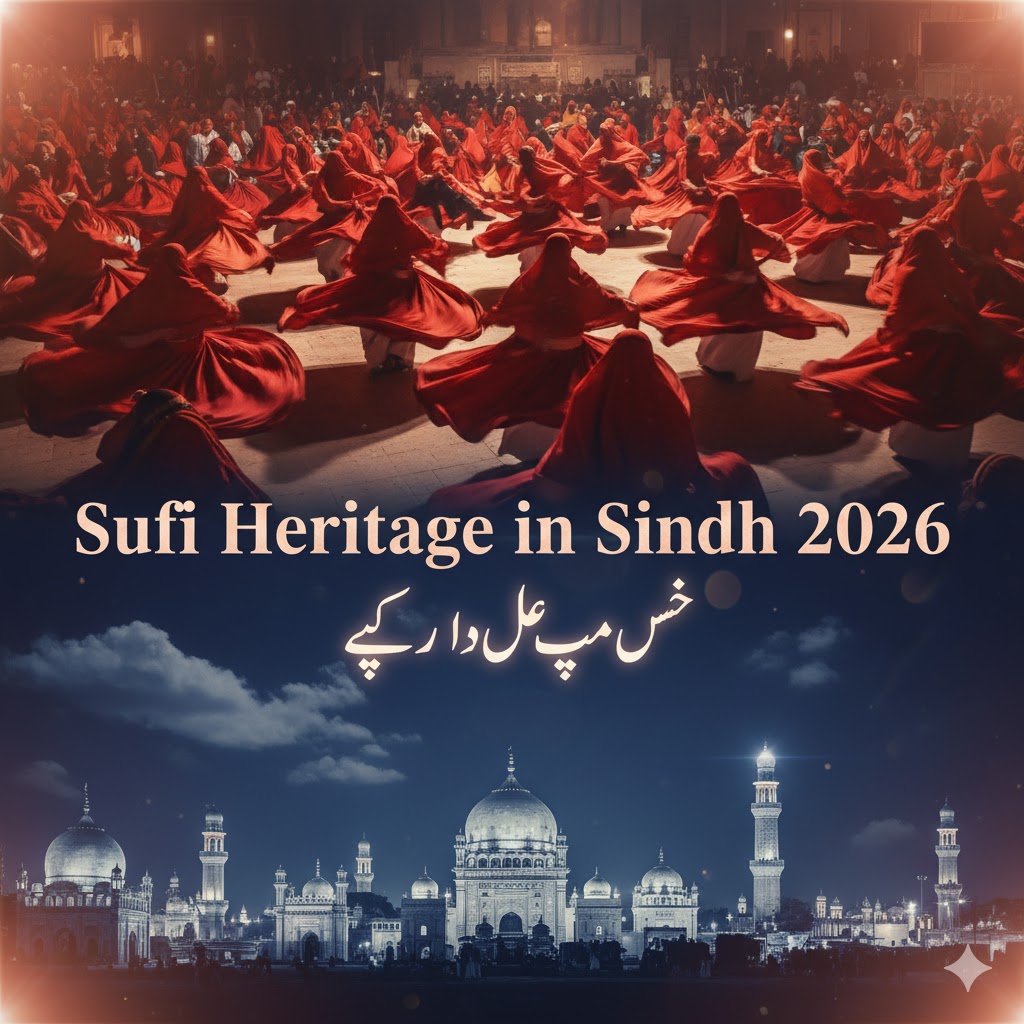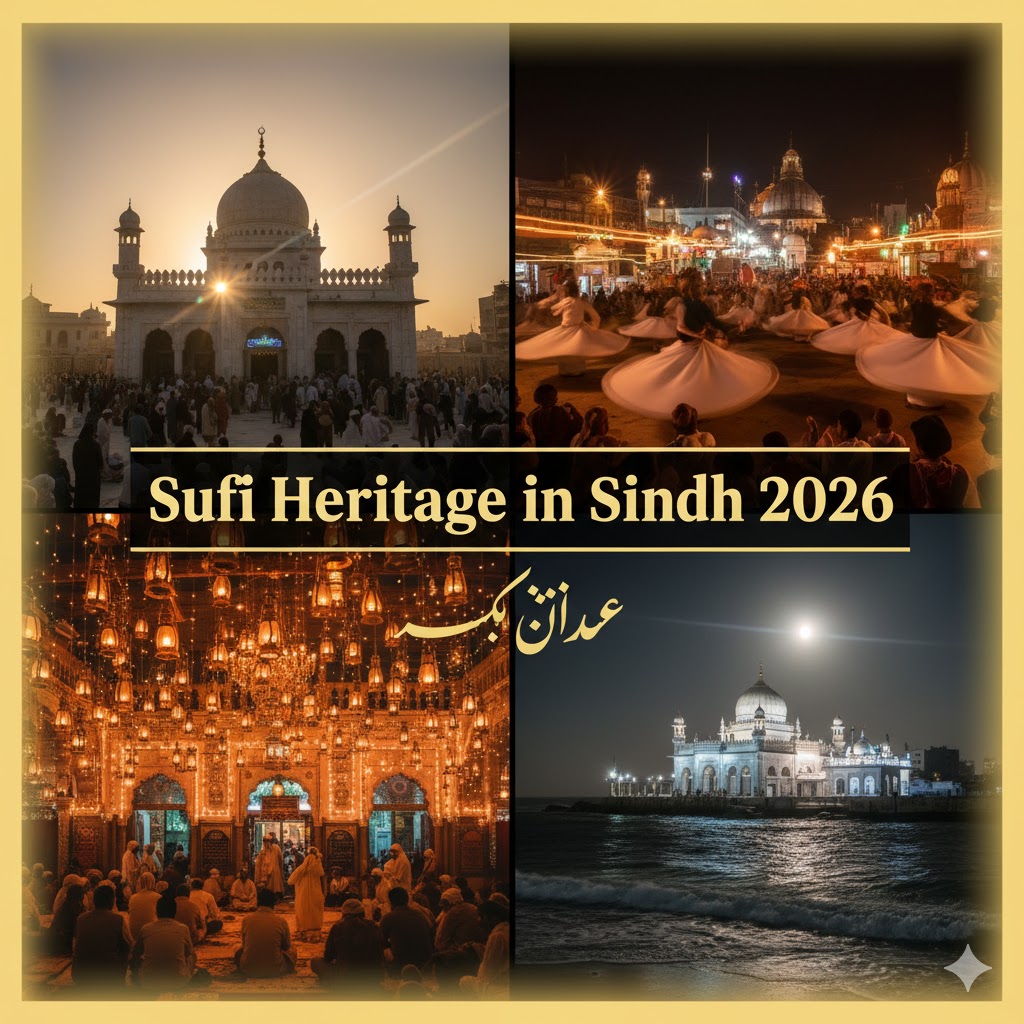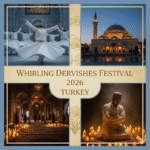Exploring the timeless shrines, poetry, music, and mystic traditions of Sindh — where devotion meets art, and faith breathes through centuries of Sufi legacy.
Table of Contents – Sufi Heritage Sindh
- Introduction — The Soul of Sindh
- Shah Abdul Latif Bhittai: The Poet-Saint of Bhit Shah
- Lal Shahbaz Qalandar: The Red Mystic of Sehwan Sharif
- Sachal Sarmast: The Voice of Tolerance and Love
- Pir Pagara & Hur Movement: Sufi Resistance and Leadership
- Abdullah Shah Ghazi: Karachi’s Spiritual Guardian
- Sufi Music, Poetry, and Dhamal Culture
- Annual Urs Celebrations in Sindh
- Shrines, Architecture & Pilgrimage Trails
- Hidden Sufi Villages & Local Mystic Traditions
- Modern Revival of Sufi Heritage
- Visitor Tips, Dress Code & Etiquette
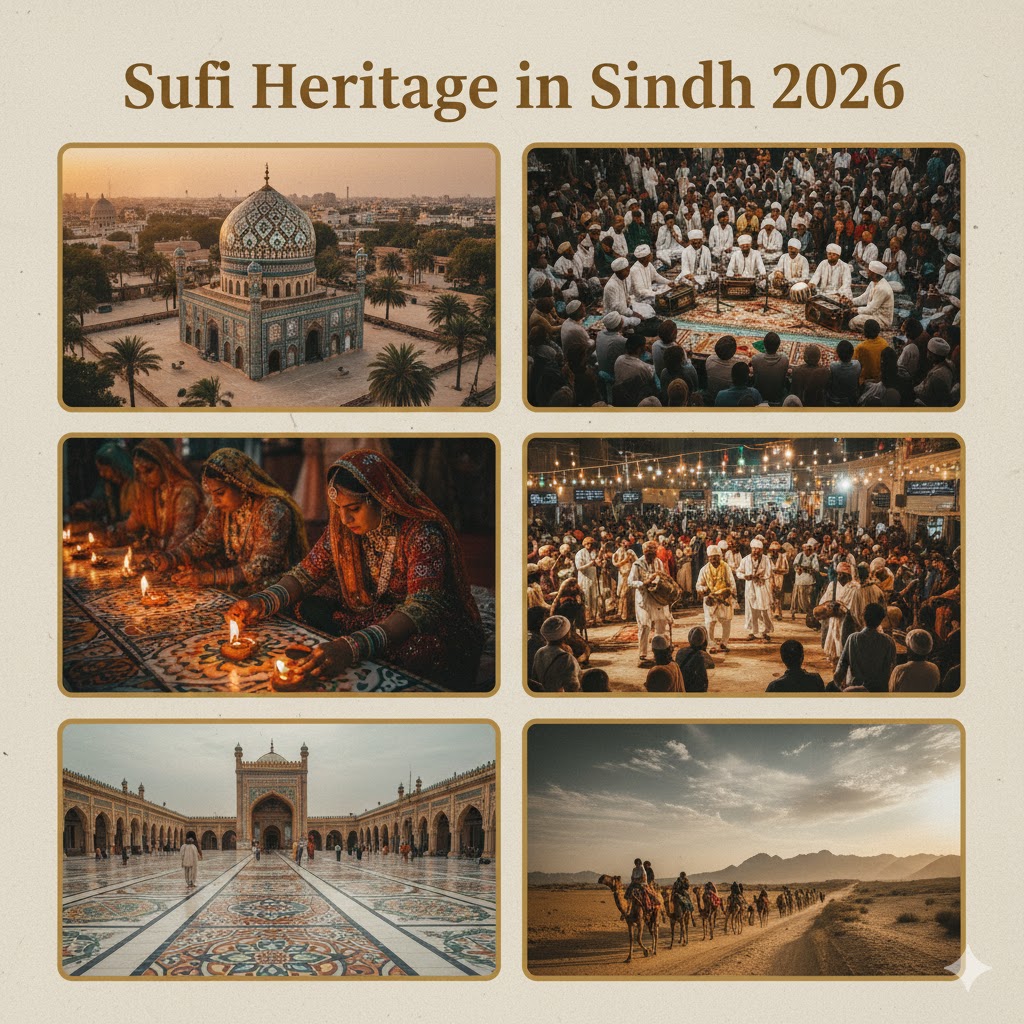
Sufi Heritage in Sindh (2026): Sacred Shrines, Poetry & Mystical Trails
1. Introduction — The Soul of Sindh
Sindh, often called the land of saints and sufis, breathes spirituality through every grain of sand and echo of qawwali. Its Sufi heritage is not merely religious—it’s a living culture that celebrates love, tolerance, and unity. From Bhit Shah’s melodic devotion to Sehwan’s ecstatic dhamaal, each corner of Sindh whispers stories of divine love that have shaped Pakistan’s spiritual identity.
Travelers exploring this mystical landscape encounter a mesmerizing fusion of poetry, music, and architectural beauty. Shrines here are not solemn tombs—they’re cultural sanctuaries where faith meets art and where locals gather for weekly mehfils, festivals, and hospitality that reflects centuries of devotion.
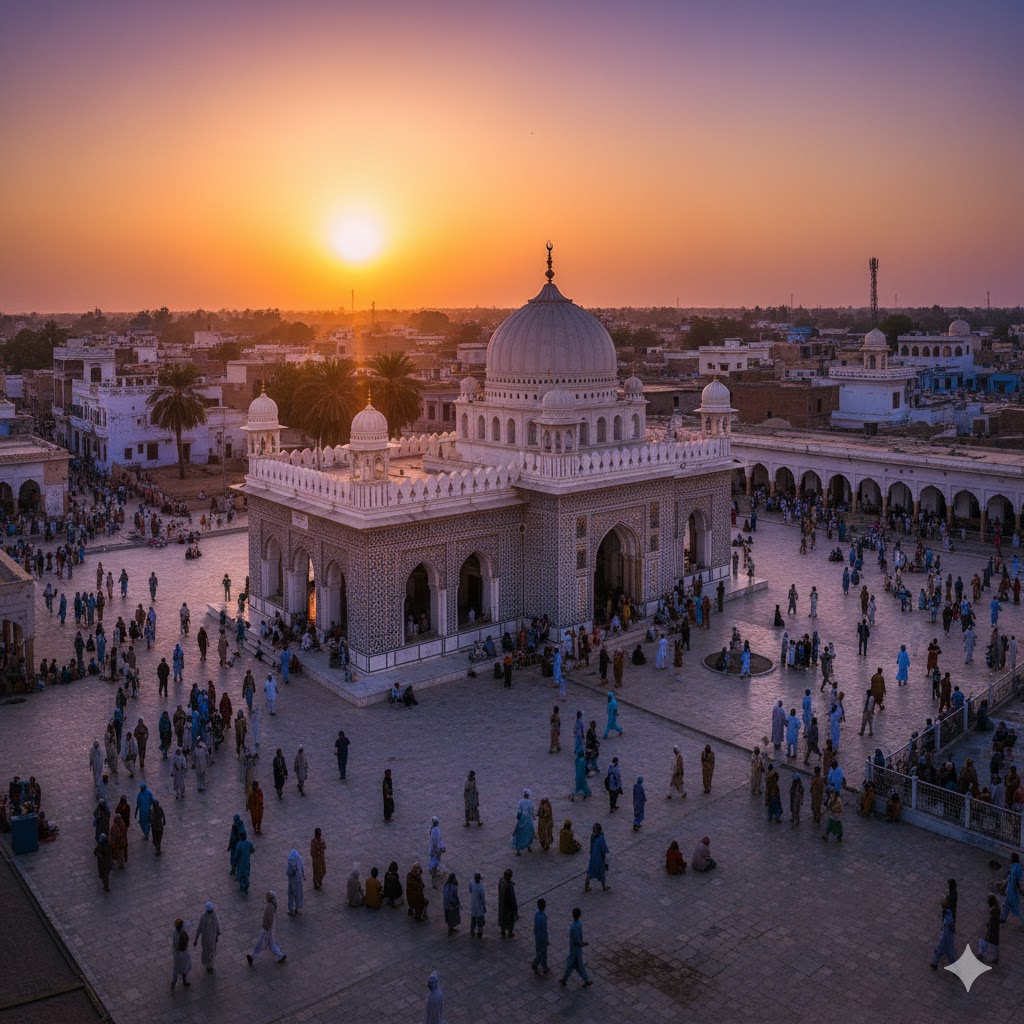
2. Shah Abdul Latif Bhittai Shrine – Bhit Shah
Located in the heart of Matiari District, Bhit Shah is home to the shrine of Hazrat Shah Abdul Latif Bhittai (1689–1752), Sindh’s most revered Sufi poet. His poetry, compiled in Shah Jo Risalo, encapsulates the essence of Sindhi mysticism—love for humanity, devotion to God, and compassion for all.
Every year, during Shah Latif Urs (usually held in Safar, the second Islamic month), devotees gather for three days of music, spiritual discourse, and poetry recitation. The air fills with the sound of tambura—a local string instrument Bhittai loved—and waee, the ancient Sindhi melody sung by fakirs in his honor.
Hidden around Bhit Shah, travelers can discover small madrasas and khanqahs (Sufi lodges) where traditional musical training still continues. Visitors are welcomed with free meals (langar) and rhythmic dhamaal in the courtyard that glows under lantern light every Thursday night.
Local Tip:
Arrive early in the morning to attend the fajr prayers and witness the rising sun over the dome. Photographers can capture golden hues reflecting off the intricate tilework—a mesmerizing view unique to Bhit Shah.
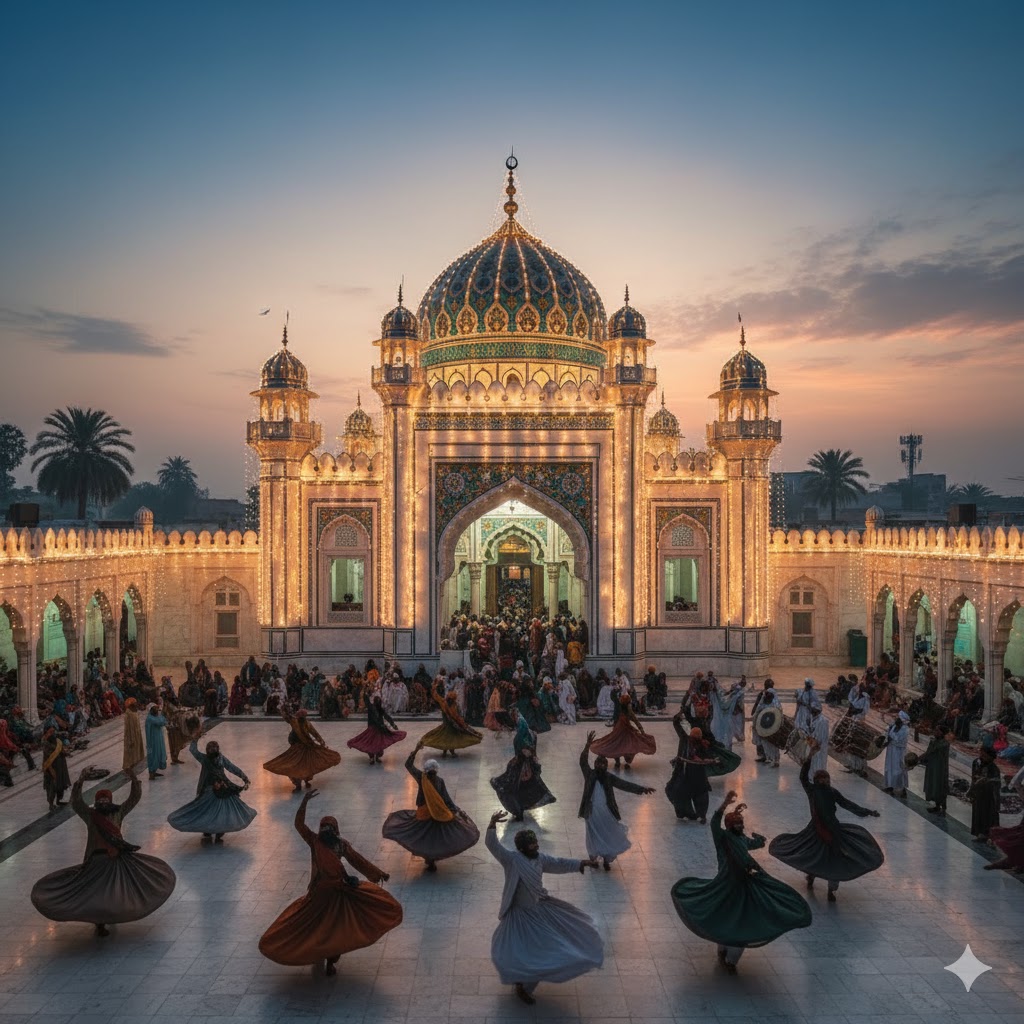
3. Lal Shahbaz Qalandar Urs – Sehwan Sharif
If Bhit Shah is the poetic heart of Sindh, Sehwan Sharif is its spiritual pulse. The shrine of Lal Shahbaz Qalandar (1177–1274) stands as a symbol of divine love that transcends caste and creed. Every year, the Urs of Lal Shahbaz draws millions of devotees who dance in ecstatic dhamaal, accompanied by the hypnotic rhythm of dhol and qawwali.
The three-day festival (18–20 Sha’ban) transforms Sehwan into a living carnival of faith. Street vendors, qawwali groups, and travelers from across South Asia fill the narrow streets. Local artisans sell red chadors, prayer beads, and handmade talismans—symbols of Qalandar’s eternal message: “Love for all, hate for none.”
Hidden Experience:
Visit the Shewan Bazaar behind the shrine for traditional sweets (sohan halwa and ladoo) and handcrafted Sufi jewelry. Pilgrims recommend spending Thursday evening inside the main courtyard to experience the “Qalandari trance”—a rhythmic state induced by continuous dhol beats.
Local Tip:
Avoid weekends for easier accommodation. Sehwan’s guesthouses fill fast, but nearby Dadu offers comfortable stays with easy access to the shrine via public vans or private jeeps.
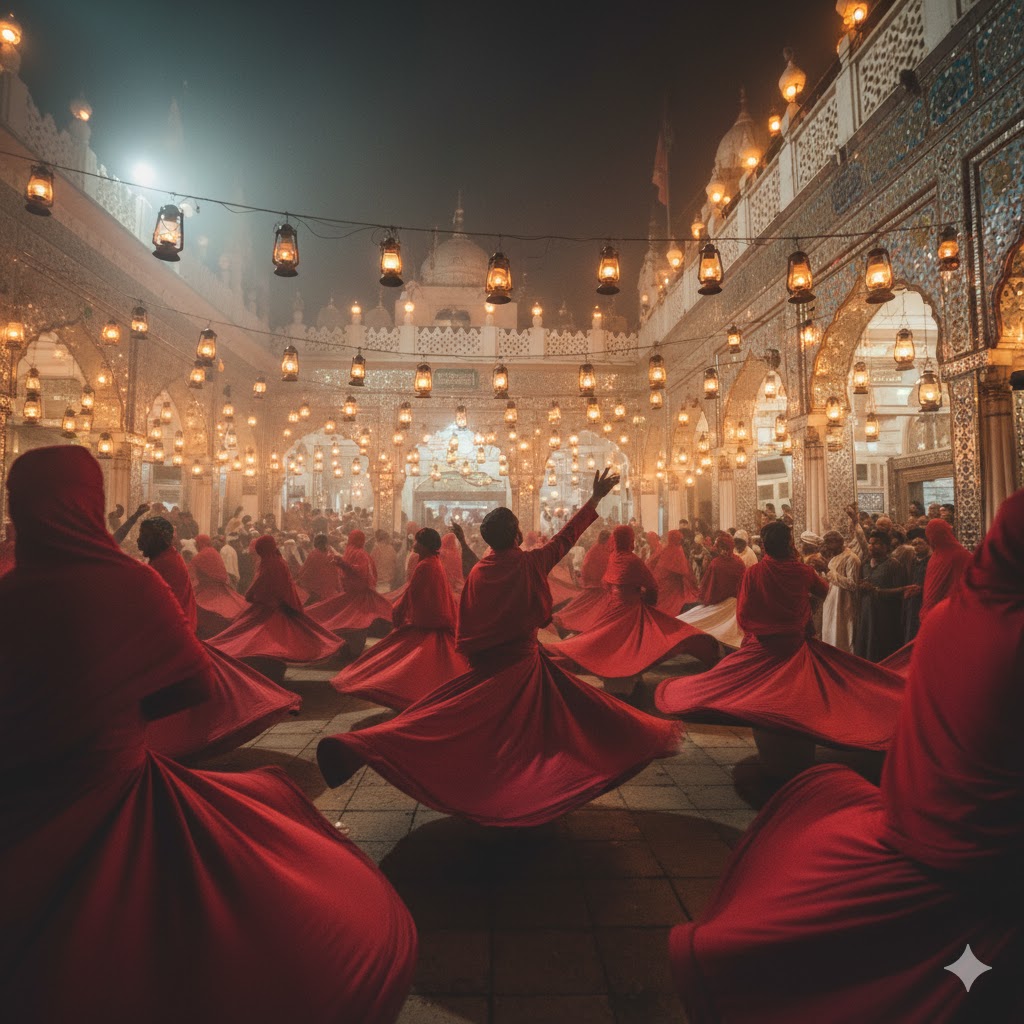
4. Sachal Sarmast Shrine – Daraza Sharif, Khairpur
Known as the Second Mansoor Hallaj for his mystic philosophy, Sachal Sarmast (1739–1829) was a poet of love and divine unity. His shrine in Daraza Sharif, near Khairpur, is an essential stop for anyone following the Sufi trail of Sindh. The annual Urs (held in Ramzan) celebrates his message of Ishq Haqiqi—the love of the true Beloved.
The festival combines musical nights, poetry gatherings (mushairas), and qawwali sessions that last until dawn. The verses of Shah Jo Risalo and Sachal Sarmast Jo Risalo are recited in chorus, often accompanied by the flute and tambura, carrying an enchanting sound through the valley.
Hidden Experience:
Travelers can visit the Khairpur Cultural Museum nearby, where rare manuscripts of Sachal’s poetry and ancient Sindhi calligraphy are preserved. Locals also guide tourists to Kot Diji Fort, just 20 km away, for a breathtaking view of the Indus plains at sunset.
Local Tip:
Try the famous Khairpur dates sold near the shrine—sweet, soft, and often gifted as a symbol of blessing by devotees.
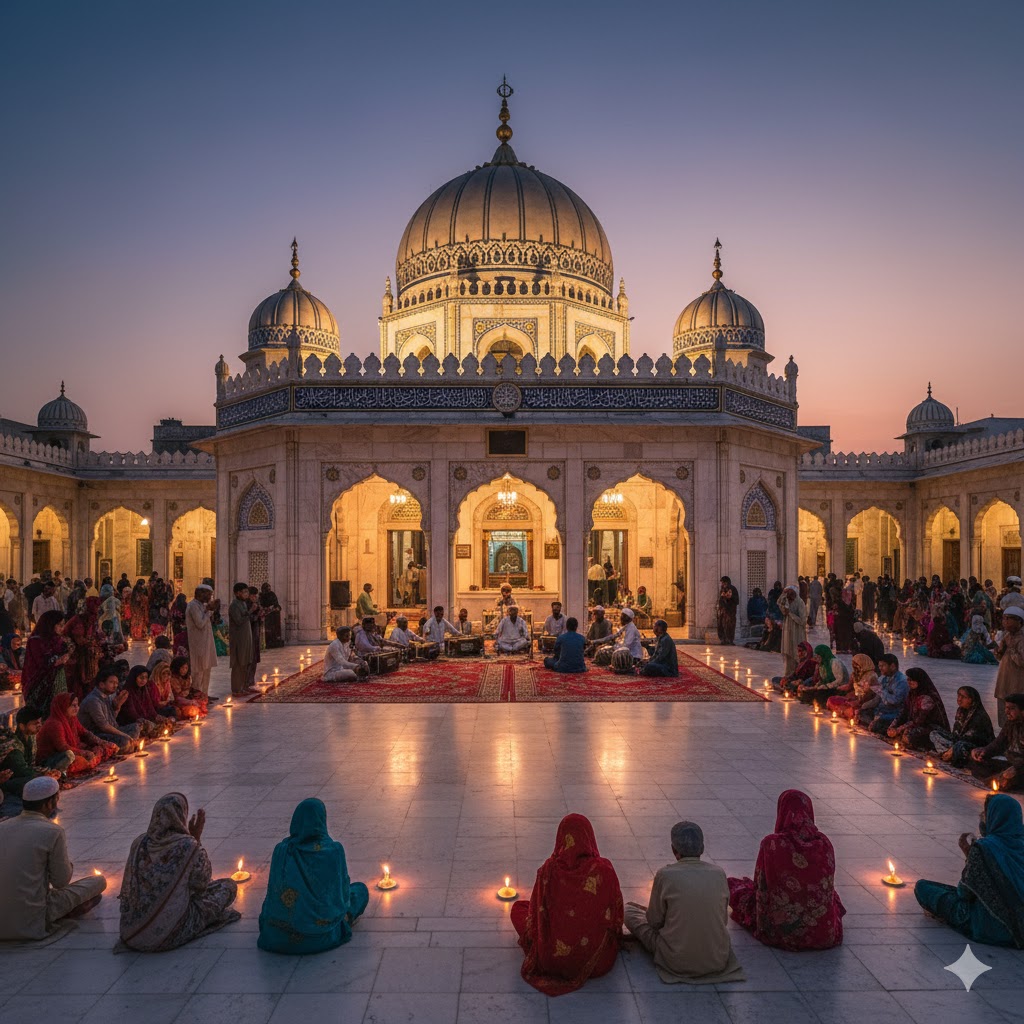
5. Hazrat Abdullah Shah Ghazi – Karachi
On Karachi’s Clifton Hill overlooking the Arabian Sea rests the shrine of Hazrat Abdullah Shah Ghazi (720–773 CE)—often called the “Patron Saint of Karachi.” His legacy is one of courage and spiritual resilience; locals believe his presence has long protected the city from cyclones and sea storms.
The annual Urs Festival (20–22 Dhul Hijjah) transforms the seaside neighborhood into a radiant gathering of believers, qawwals, and street vendors. Pilgrims in white and green chadors climb the marble steps chanting verses of unity, while the aroma of rosewater and sandalwood fills the air.
A hidden tradition unfolds each Thursday night when dhol players begin a rhythmic procession down the hill. Karachi’s youth, artists, and travelers often join the dhamaal here, where modern city lights blend with centuries-old mysticism.
Local Tip: Visit around sunset for spectacular views of the Clifton beachline, then enjoy traditional malpura or biryani from the food stalls below the shrine.
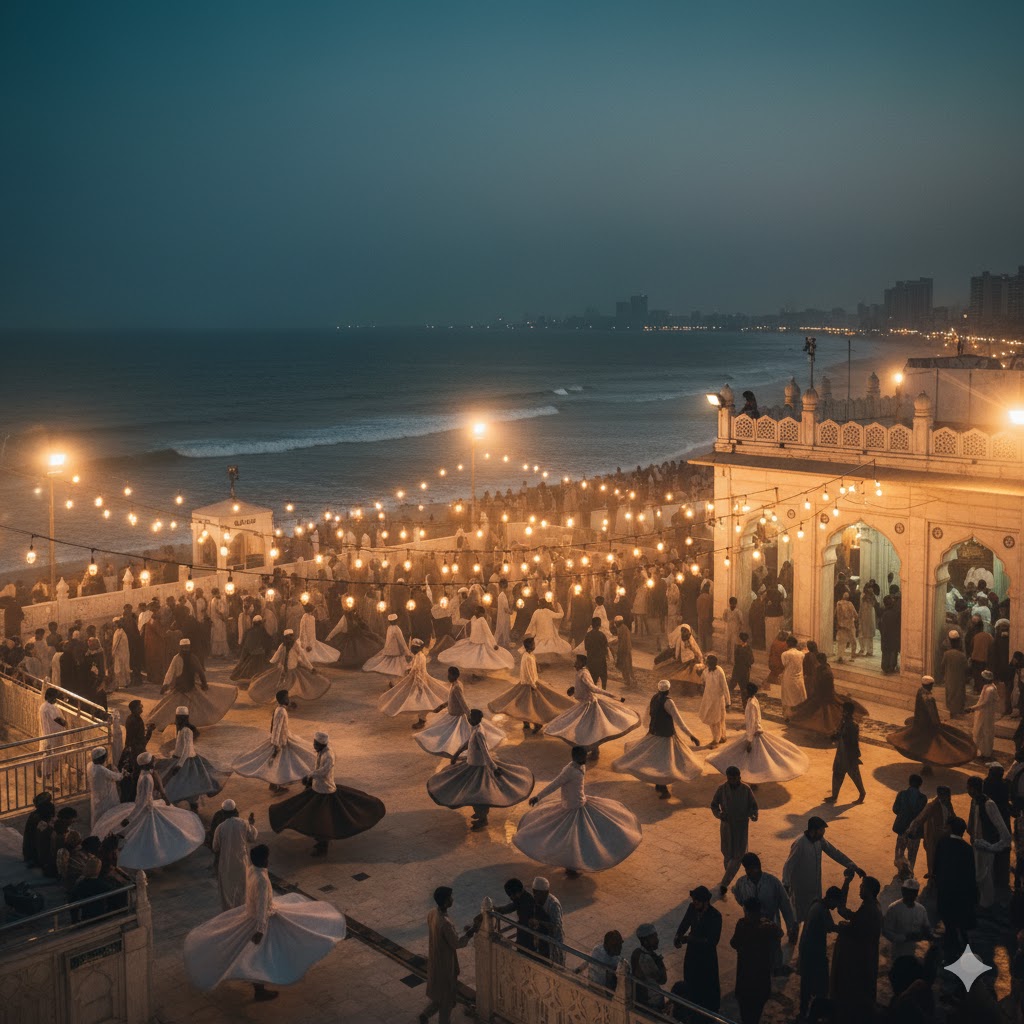
6. Sufi Music and Qawwali Heritage of Sindh
Sufi music in Sindh is a living bridge between poetry and devotion. Instruments like the tambura, naqara, and dhol merge with soulful lyrics drawn from Shah Jo Risalo. The Qawwali Mehfils at Bhit Shah, Sehwan, and Hala are cultural sanctuaries where voices rise in harmony with drums that echo across time.
Hidden inside Hyderabad’s old quarters is the Fakir Khushhal Khan Academy, where apprentices learn waee and kafi singing in Sindhi and Persian. Travelers seeking authentic experience can attend an evening mehfil—a raw, spiritual concert lit by lanterns and incense.
Sufi music here isn’t mere performance—it’s meditation in motion, a call to dissolve the self in the divine rhythm of love.
Local Tip: Plan your visit during Rabi-ul-Awwal when numerous shrines host open-air qawwali nights free for the public.
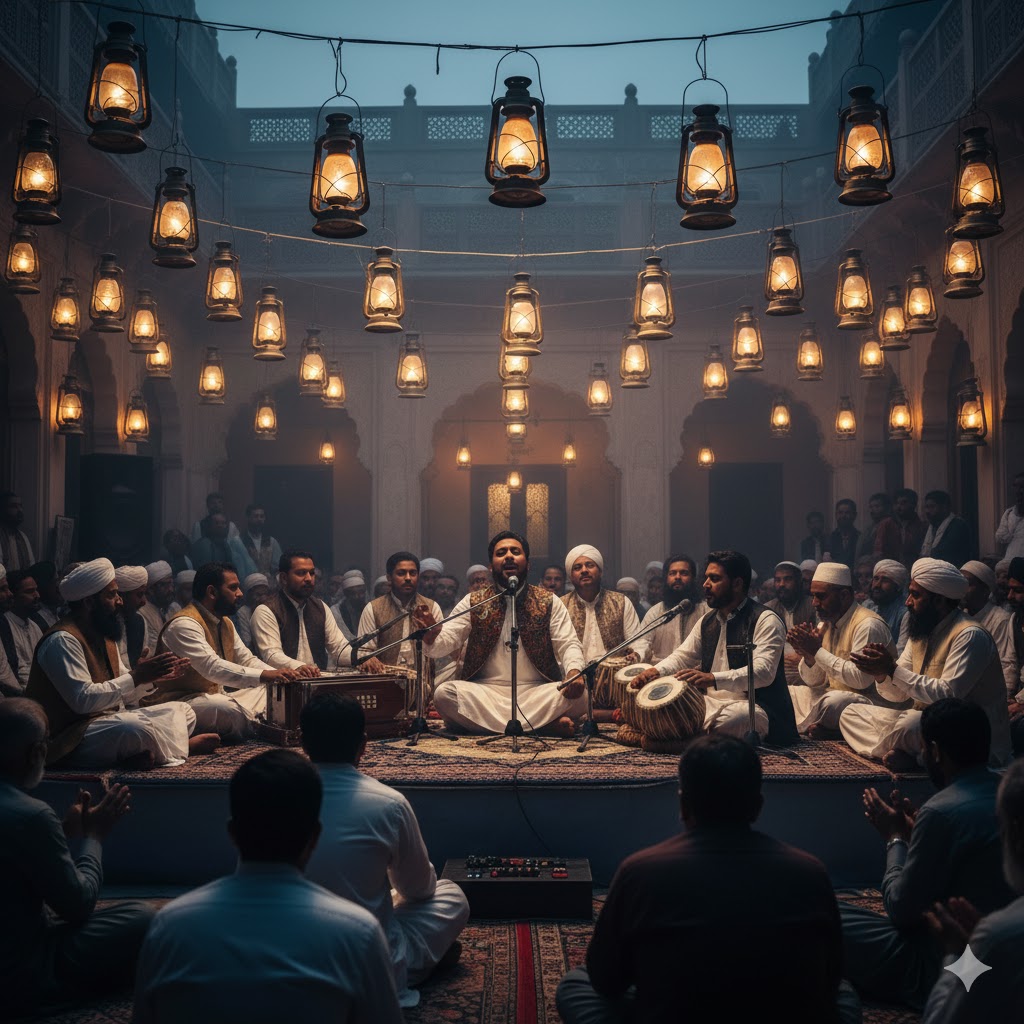
7. Hidden Sufi Shrines and Local Legends
Beyond famous sites lie countless mazars (shrines) scattered across dusty towns and riverbanks. In Thatta, the Shah Inayat Shaheed Shrine commemorates a saint who preached equality centuries before modern reformers. His annual Urs is marked by folk songs praising laborers and farmers—a rare fusion of spirituality and social justice.
In Hala, travelers find Makhdoom Nooh Shrine, renowned for its intricate blue tilework and a yearly procession where devotees carry lanterns through the bazaar. Meanwhile, near Tando Allah Yar, the lesser-known Baba Ganj Shakar Shrine hosts a winter fair featuring camel decorations and handmade pottery.
Hidden Experience: Ask local guides to show the “whispering door” at Shah Inayat Shrine—it’s said to echo your prayer softly back to you.
Local Tip: Combine a visit to these shrines with a detour to Makli Necropolis, one of the largest historical graveyards in Asia, to explore the fusion of Sufi and Sindhi art.
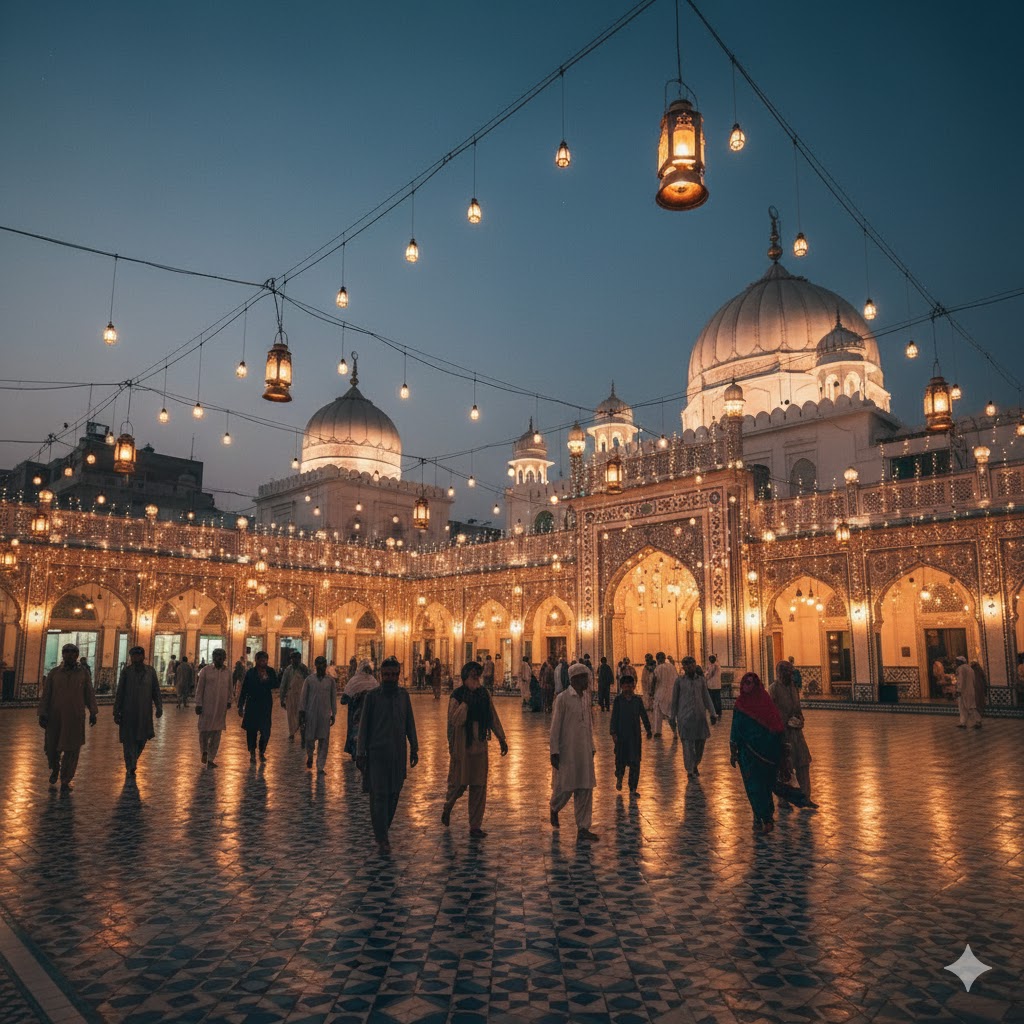
8. Women in Sindh’s Sufi Tradition
Sufism in Sindh honors not only male saints but also women mystics who inspired generations. Mai Safooran, a disciple of Shah Latif, was celebrated for her lyrical poetry reflecting divine love through everyday village life. In Sukkur’s rural outskirts, the shrine of Mai Khairun still attracts female pilgrims seeking solace and strength.
During Urs festivals, women participate in rituals, manage langar kitchens, and lead devotional recitations—roles rarely seen elsewhere in South Asia’s Sufi culture. Their contributions affirm Sufism’s message of inclusion and equality.
Local Tip: Travelers can attend women-led zikr circles in Khairpur and Matiari—respectfully, by prior arrangement through local cultural NGOs.
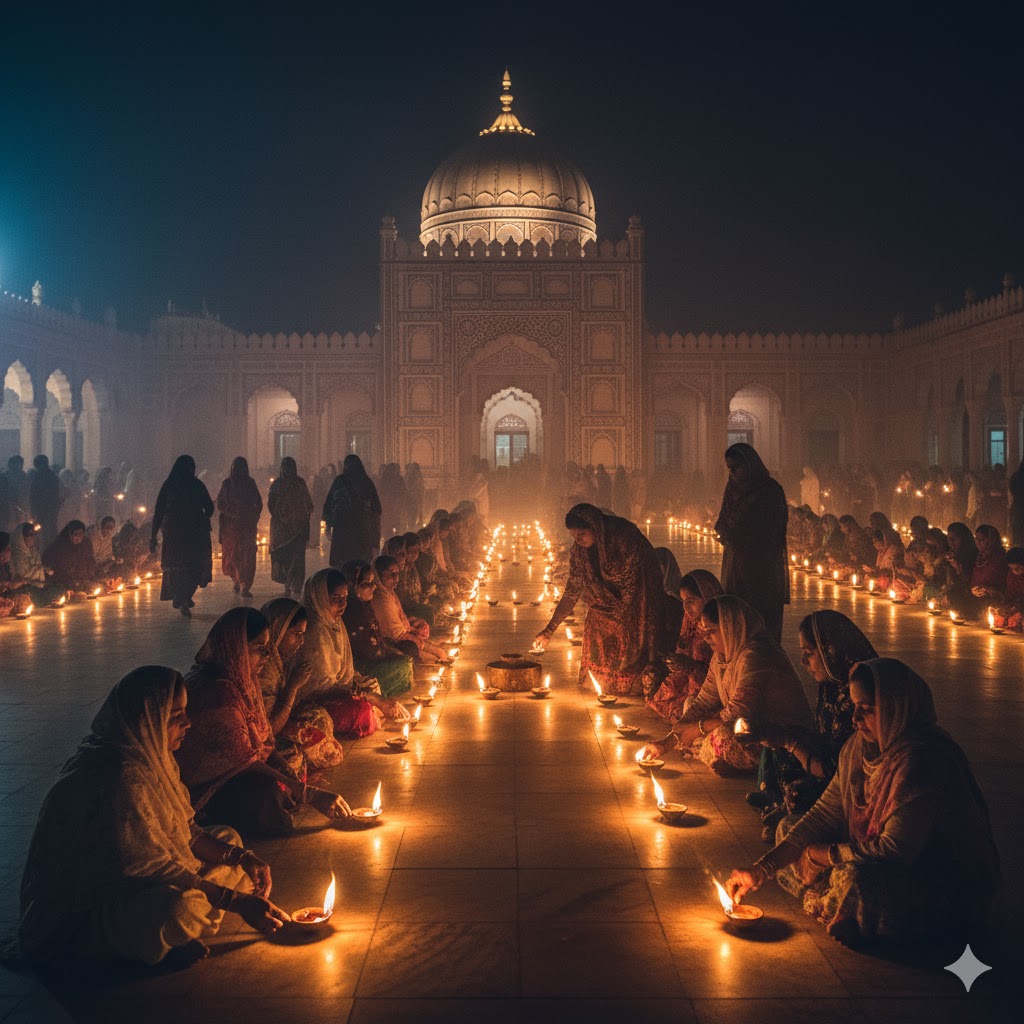
9. Sufi Trails and Cultural Tourism Tips
Sindh’s Sufi heritage is best explored through its Sufi Trail, connecting major shrines across Matiari, Sehwan, Khairpur, and Thatta. Modern travelers can start in Karachi, follow the Indus Highway to Bhit Shah, then onward to Sehwan and Daraza Sharif. Each stop reveals a different flavor of Sindhi culture—from music and food to calligraphy and crafts.
Local tour operators now offer heritage tours combining spiritual sites with historical ones like Makli Hills and Kot Diji Fort. Cultural enthusiasts can join workshops on Sufi music or tile art in Hala to experience the region’s living traditions.
Read More:
- Explore related guide: Hunza Heritage Guide 2026
- Continue reading: Sindh Cultural Festivals 2026
Sources:
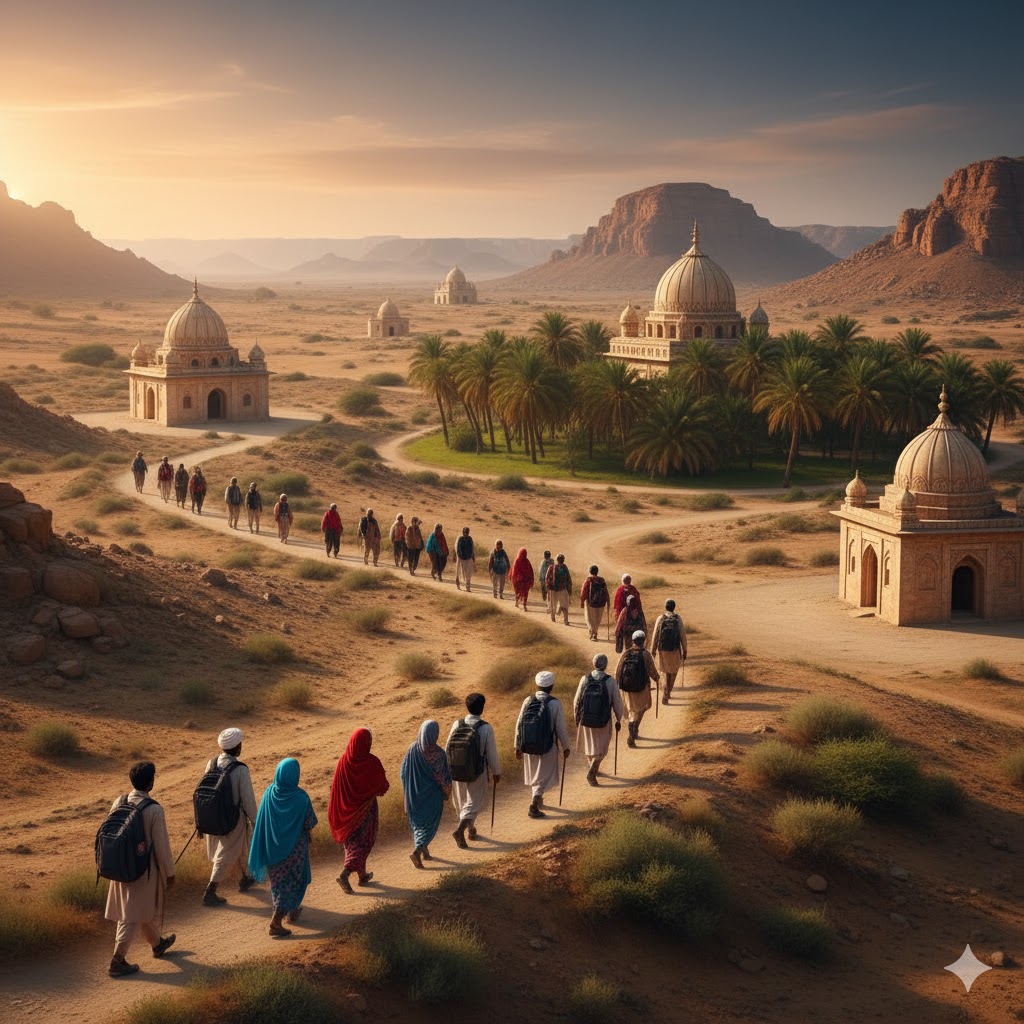
10. Conclusion – The Eternal Flame of Sindh’s Mysticism
Sufi heritage in Sindh is not merely a reflection of the past—it’s a living heartbeat that continues to unite people across cultures and beliefs. Every shrine, every qawwali, and every devotee tells a story of divine love and acceptance. In this land, the message of Shah Latif, Sachal Sarmast, and Lal Shahbaz still echoes: “All are one; love is the truth.”
As travelers depart from Sehwan or Bhit Shah, they carry more than memories—they carry the fragrance of rosewater, the rhythm of dhol, and the serenity of Sindh’s eternal soul.
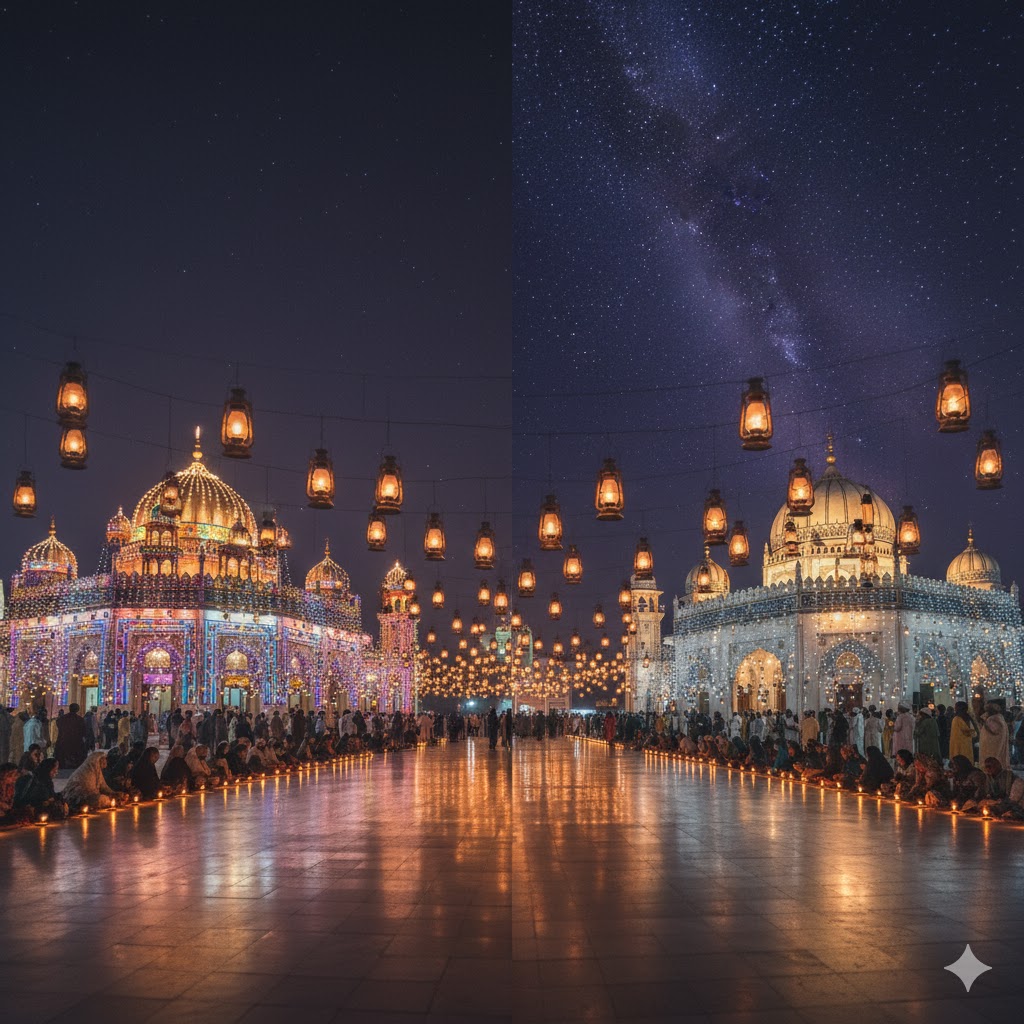
FAQs — Sufi Heritage in Sindh (2026)
1. What makes Sindh the heart of Sufi heritage in Pakistan?
Sindh is considered the cradle of Sufism in South Asia because of its centuries-old shrines, poetry, and music traditions promoting love, peace, and tolerance. The region’s saints—like Shah Latif, Lal Shahbaz, and Sachal Sarmast—spread Islam through compassion rather than conquest.
2. When is the best time to visit Shah Abdul Latif Bhittai’s shrine?
The best time to visit is during Shah Latif Urs, held annually in Safar (Islamic month), usually between September and November. Early mornings and Thursday evenings offer the most spiritual atmosphere with live waee performances and minimal crowds.
3. What happens during the Lal Shahbaz Qalandar Urs in Sehwan?
The Urs festival of Lal Shahbaz Qalandar (18–20 Sha’ban) is a three-day celebration of ecstatic dhamaal, qawwali, and devotion. Thousands of devotees perform rhythmic dances in the shrine’s courtyard, symbolizing unity beyond caste, class, or creed.
4. How is the Sachal Sarmast Urs different from other Sufi festivals?
Sachal Sarmast Urs in Daraza Sharif emphasizes poetic expression and peace. Unlike the intense dhamaal of Sehwan, this Urs focuses on night-long poetry recitations, flute performances, and spiritual dialogue sessions around his message of Ishq-e-Haqiqi (Divine Love).
5. Why is Hazrat Abdullah Shah Ghazi called the patron saint of Karachi?
Karachi’s coastal communities believe Abdullah Shah Ghazi protects the city from sea storms and calamities. His shrine, overlooking Clifton Beach, symbolizes resilience and unity in Pakistan’s largest metropolis, blending modern life with timeless spirituality.
6. Where can travelers experience authentic Sufi music in Sindh?
Authentic Sufi music can be heard at Bhit Shah, Sehwan, Hyderabad, and Hala during evening mehfil-e-sama. These gatherings feature live tambura and dhol performances, with fakirs singing verses from Shah Jo Risalo under lantern light.
7. Are there hidden Sufi shrines worth visiting besides the famous ones?
Yes. Makhdoom Nooh Shrine (Hala), Shah Inayat Shaheed (Thatta), and Baba Ganj Shakar (Tando Allah Yar) are hidden gems known for their tilework, folk songs, and peaceful ambiance. They offer an offbeat yet deeply spiritual experience for explorers.
8. What is the role of women in Sindh’s Sufi tradition?
Women play active roles as poets, caretakers, and spiritual guides. Figures like Mai Safooran and Mai Khairun are remembered for their devotion and contributions to poetry and charity. Their shrines attract pilgrims seeking empowerment and guidance.
9. How can tourists follow the Sufi trail in Sindh?
Start from Karachi (Abdullah Shah Ghazi) → Bhit Shah (Shah Latif) → Sehwan (Lal Shahbaz Qalandar) → Daraza Sharif (Sachal Sarmast) → Thatta (Shah Inayat).
The route is well-connected by Indus Highway and offers insight into Sindh’s music, crafts, and village hospitality.
10. What message does Sindh’s Sufi heritage convey to the modern world?
Sindh’s Sufi saints taught harmony, inclusion, and love beyond divisions. Their timeless message—“Love is the only true faith”—remains relevant today, encouraging unity in a diverse and often divided world.
